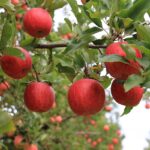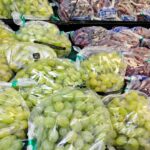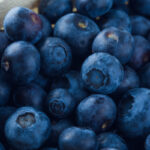South Africa: First Royal Honey Murcott mandarin exports likely in 2018

Discovered in an Australian orchard as a chance seedling 15 years ago, the early season Royal Honey Murcott (RHM) has seen an “extraordinary” performance in export markets. Now, the variety is under evaluation for production further afield, managed globally outside Australia by South Africa-based Biogold International and its subsidiary Citrogold.
Citrogold general manager Bryan Offer says there are currently trial plantings of the RHM in Chile, the U.S., Spain and “selected Mediterranean countries”, but the furthest ahead is definitely his native South Africa.
“South Africa at this stage is the furthest advanced outside of Australia. The first experimental blocks was planted last year with further blocks being planted later this year,” he tells www.freshfruitportal.com.
“By next year approximately 50 hectares will have been planted in South Africa with the first fruits ready to export probably in 2018 at the earliest,” he says, adding the main plantings are in the areas of Hoedspruit, Burgersfort and Ohrigstad.
Biogold and Citrogold have a policy of limiting the amount of hectares allocated to grow the new varieties it introduces, and in the case of RHM it’s going to be “fairly high at 1,000 hectares” until 2020.
“Then we will evaluate how the market reacts to this variety and whether there should be more plantings,” Offer says.
But in a citrus market - not to mention an overall fruit market – with so many varieties introduced ever year, what makes the RHM so different? Offer explains the cultivar’s history and some of its beneficial characteristics both for growers and consumers.
“Allen Jenkin [of Ironbark Citrus] discovered the variety in an Ellendale orchard of his about 15 years ago - that’s not to say it is an Ellendale,” Offer says.
“It’s a mandarin and it ripens in early May on his farm in Queensland – he’s basically on the Tropic of Capricorn – so it’s a more sub-tropical climate rather than a temperate climate.
“In the cooler temperate regions of South Australia and Victoria it would ripen a month later.”
Even though the variety’s parentage is not known, it was given the name Royal Honey Murcott due to some Murcott characteristics such as its firm skin.
“The fruit has a relatively low acid content compared to other mandarin varieties, which makes it very palatable to consumers in the early harvest season.
“What we do notice is the acid levels reach a certain threshold and then tend to stay at that level for the rest of the season – they don’t carry on dropping away. Combined with high sugars it presents an excellent eating experience. “
This last point is particularly important for South Africa, which exports fruit over very long distances, and according to Offer higher acid citrus fruit tend to ship better.
“Having said that and noting the experiences of the fruit coming out of Australia and also from cold sterilization tests done in South Africa, which is 30 days at 0.6°C (31°F), the quality has come out well,” he says.
“We’re fairly confident it’s going to be a good variety, certainly for markets in the Far East and China, and perhaps other markets like India and the Middle East where lower acid fruit are generally preferred to higher acid fruit.”
He adds the fruit has a bright orange color similar to the Nadorcott variety, and is firm but still easy peeling.
The current selection is also susceptible to cross-pollination and can therefore have seeds when cross-pollinating varieties are planted nearby.
“But in single blocks the seed levels are generally low,” he says.
“Development work is being done to get seedless or at least very low seeded fruit – that will be the next generation of RHM to come, three or four years down the line,” he says, clarifying this process is through irradiation techniques.
“It has a very good shelf life, similar to Murcott - another thing is it is mildly acceptable to Alternaria Brown Spot - similarly to Nova - which is a factor that any citrus grower would want to know.”
Alternaria Brown Spot is a fungal disease that can affect citrus in any country in the world when they are grown in areas with summer rainfall.
“If you are planting say in the Western Cape of South Africa which has winter rainfall and hot dry summers - a Mediterranean climate - it would perhaps be less problematic,” he says.
“RHM is a vigorous tree, upright growing, typically mandarin-like in the sense of these strong shoots which eventually bend and will open up a bit – it will need to have normal mandarin cultural practices applied to it.”
When the South African RHMs come on-stream – this year the country had its first fruits off just 30 trees – they will add to the existing Australian exports which Allen Jenkin describes as “extraordinary”.
“Our company Ironbark Citrus has planted 70 hectares and will plant a further 20 next year,” Jenkin says.
“We have the largest plantings (in Australia) with several other growers trialing the variety with initial plantings of six to 10 hectares per property – there are approximately 120 hectares planted to date.”
“We have focused more on the export markets as generally the Australian market is oversupplied with the local easy peeler Imperial in the harvest months of May and June.”
Under the Australian standard of cold sterilization, the variety has been exported to countries such as Japan, China, Singapore, Thailand and the UAE.
Fruit from South Africa will probably overlap with our fruit in some of our traditional markets but they will also focus on other markets that are harder for Australia to reach.
“In the coming 2017 season we’ll sample cartons of fruit to different importers in Europe, U.K., Canada and China, to show the retailers the fruit that is on its way,” Offer says.
“We will explore Europe a bit more intensively than he [Jenkin] has and later Canada, and eventually the U.S. when fruit comes out of the right production areas in South Africa."














































